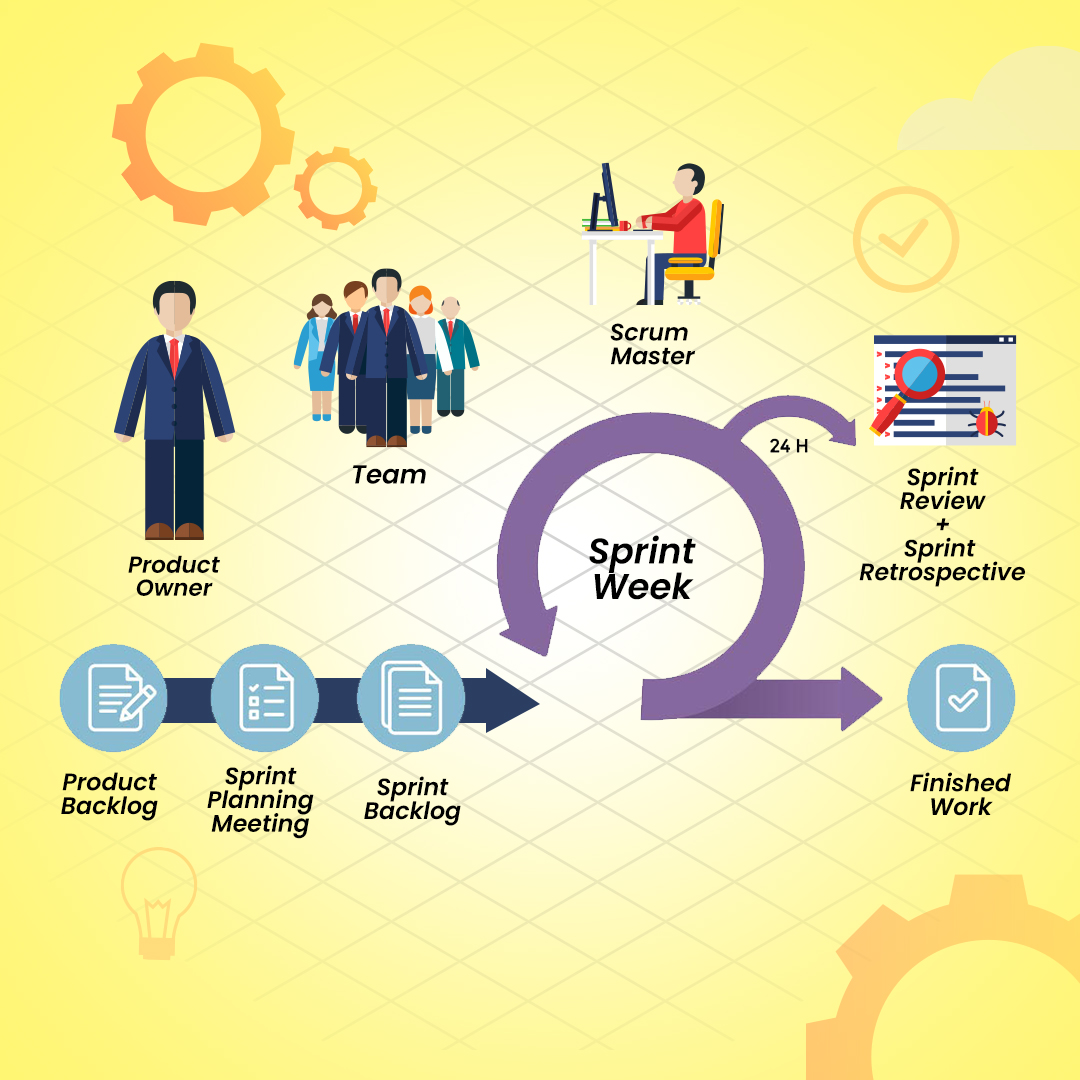The Agile Squad: What Is It and Why Does It Matter to Your SDLC
To survive in today’s cutthroat competition, many businesses are now looking for ways to boost their efficiency while keeping their employees happy and motivated. Most of them have turned to various workforce management and team management methodologies and styles, including some options that lie outside the lines of the traditional corporate culture. And thanks to an evolving workforce that has a different set of priorities and requirements in life, these unconventional methods are working. One of the most popular names in this list is of course – the agile squad.
In this article, we will be taking a deeper look at the term, understanding the meaning, learning the benefits of this structure, and finding out how it affects the software development lifecycle. So, without any further delay, let’s begin!
What is an agile squad?
A squad is an organizational model that brings together, skilled professionals from different areas and expertise to work towards a common goal or objective. Usually, these groups consist of a maximum of twelve members, and each team has the autonomy to design, build, and make decisions on its own.
In simple terms, an agile squad is a small multidisciplinary or cross-functional team that is majorly self-managed and is excellent at teamwork and cross-collaboration.

In the traditional model, individuals with the same skills usually come under one same team. This can decrease flexibility and hamper communication. On the other hand, an agile multidisciplinary squad will have different points of view on a single problem, and the whole team aims to solve a problem from different perspectives. This innovative solution speeds up the process and enables better decision-making.
Agile squad – concept and relevance
As the name suggests, this approach is a subset of the agile methodology of software development that puts the focus on individuals that are committed to finishing tasks through customer collaboration and a fluid and dynamic process called ‘sprint’. The agile methodology uses techniques that can speed up the delivery of a project and enable you to rectify errors swiftly, and consequently plan actions to avoid any unforeseen events.
Having an agile squad in the organization or relying on a third-party distributed agile team allows each product under development to get more attention from the team that is exclusively dedicated to it. Agile squads are not just multidisciplinary, but also focused on creating continuous and accurate deliveries through collaborative and collective intelligence. This contributes to the efforts of other areas of the organization as a whole.
Who is part of an agile squad

To ensure its multidisciplinary structure, an agile squad has skilled professionals from different areas, which are usually different according to the respective project.
However, some roles are mandatorily present to ensure the smooth management of the software development process. They are:
Product Owner
The product owner is the member of the squad who uses agile methods to prioritize and outline a software development project’s backlog and workflow.
This person is responsible for maintaining a defined view of the related processes, sustaining the integrity of the activities, and ensuring the final quality of the delivery. This role is the key link between the team and the stakeholders, ensuring that the team has all the required resources to gain the best final results.
Scrum Master
The scrum master of an agile squad is dedicated to the agile methodologies processes, streamlining the tasks of the entire squad. Therefore, it is up to the scrum master to leverage efforts, as per the scrum’s values and practices, to ensure that the exact structure is properly followed, workflow is well maintained, and the opportunities are properly taken care of.
Development team
As the name suggests, the development team consists of the squad members who are responsible for implementing the exact plan and executing the development activities. For the development of agile projects, it is imperative that the team includes experts with extensive knowledge of different technology stacks and programming languages. They also need to be skilled in identifying flaws and proposing improvements in the software development life cycle.
Design team
As the name implies, it is the team that consists of designers who are responsible for building a product’s graphical interface, in short, the UI UX design services team. This section of the squad focuses on the user experience and the best usability scenario. The design also includes software quality assurance experts who are responsible for performing performance and usability tests that ensure that the product meets the expectations of the stakeholders. They are in charge of confirming that everything works well and what can be improved.
Agile Squad Structure
Now that you know the professionals, who form the agile squad, let’s try and understand the structure with which these teams are organized.·
- Tribe: the term is used when two or more squads come together with a common goal, exchange information, and work collaboratively. When there is more than one squad working on similar projects, this is a good solution since it brings more agility in finding solutions to problems.
- Chapter: the term refers to professionals who work in the same domain but in different squads. They might maintain frequent interactions to not just exchange information about the software development process, but also to improve their respective skills. These exchanges can be scheduled on a weekly or fortnightly basis, as is essential for product development.
- Guild: it is used when experts from different squads and sectors work on multiple projects but come together to discuss common problems and share knowledge.
Benefits of the agile squad
The agile squad approach offers several benefits. That is why a large number of organizations are now adopting this organizational model to streamline their project development process and hasten the delivery of the end product. The latest findings of The State of Agile Report indicate significant growth in Agile adoption within software development teams, increasing from 37% in 2020 to 86% in 2021. Some major benefits offered by an agile squad include:
1. Transparency in information exchange
Since squads work collaboratively, the exchange of information within and between teams needs to be a constant practice. Everyone involved in the project will have access to the required documentation. This will allow for more clarity in setting deadlines and offer transparency in information exchange during custom software development.
2. Continuous deliveries
The ability to detect bugs at an early stage and take the necessary steps to rectify them will enable agile squads to deliver their tasks quickly and consistently. Since there are deadlines for each of the activities of a project, the cycles are shorter, and the deliveries are more constant. This is one of the major benefits of following agile methodologies – the power to monitor development collaboratively at every stage of the project.
3. Productivity and autonomy
Since the squads are aligned to work towards the common goals in the software development process, it enables them to attain autonomy. They have the power to decide the approach they need to take to reach their goals within the boundaries of the overall product strategy. With well-organized methods and frequent monitoring of possible hurdles, agile squads can ensure an increase in productivity and the quality of the end products.
Read More: Want to know more about agile development? Here’s a quick read about the major benefits of agile software development.
Key takeaways
Software development based on the agile squad approach encourages cross-functional teams that have a holistic view of the project and thus reduce possible risks. Also, the easy transfer of necessary information and knowledge between and within squads allows them to adapt quickly when an issue arises, without having to start from scratch.
At Bridge Global, we stress the numerous benefits of software development using the agile methodology and have chosen to organize our development teams into squads. The approach enables easy knowledge transfer, team alignment, co-location, and autonomy that consequently helps us in delivering better products more quickly with a lower risk rate and predictable velocity.
If you further need a quick guide to the basic units of agile software development methodology, take a look at this explanatory blog or give us a call. Our experts will be happy to help you and answer all your queries.


